Flaky epidermis on the lower extremities is a problem faced not only by women, but also by men. Dry skin leads to the fact that it first begins to become rough, then peels and cracks, which, of course, brings discomfort to everyday life, and sometimes even causes discomfort.
If such a problem occurs in the summer, then putting on nice open shoes becomes problematic, and deep cracks in the feet cause discomfort and pain.
To overcome this skin ailment without visiting a doctor, you can use many home recipes that will relieve you of dry feet in the shortest possible time. But before moving on to recipes, you need to understand what may be causing this problem.
Causes
The reasons for the appearance of dry skin on the soles of the feet are quite varied, however, most often it is due to impaired blood flow in the lower extremities. Circulation problems are most often caused by wearing tight shoes or thick stockings. But these factors can also cause the development of varicose veins, which begins with the appearance of spider veins and ends with vein thrombosis and their removal.
I would like to note that wearing tight tights does not allow the skin to “breathe”, which, in turn, disrupts its water balance. But not only stockings, but also clothes that fit tightly to the body can lead to such a problem, which not only causes skin problems, but also worsens blood circulation, negatively affecting the entire body as a whole.
The skin on the feet also peels, perhaps due to exposure to low temperatures. In women, this is facilitated by wearing short dresses in winter and frequent cosmetic procedures with various products that negatively affect the skin of the feet.
These include bubble baths, soaps and even moisturizing body milk. When choosing cosmetics, you must carefully study its composition in order to exclude components that dry out the epidermis. Foot care cosmetics should be rich in ceramides that moisturize the epidermis and natural essential oils that help tone it.
Frequent use of water with a high chlorine content can also cause dryness and cracks in the epidermis. If you do not have the opportunity to wash with other water, then after taking water procedures, be sure to treat your feet with a nourishing cream.
Dry skin on the feet and other parts of the body can appear due to psoriasis, diabetes, or dermatitis. If the cause of dry skin is a disease, this problem must be solved only with the help of a specialist. Since it is possible to bring the skin back to normal condition only if it is possible to find and eradicate the cause of this problem.
Age also plays an important role in dry skin. The older a person gets, the less hydrated the skin becomes. After forty years, you have to put in a lot of effort to keep the epidermis healthy and elastic. In this case, products for aging skin help fight the signs of aging.
What can you do to cope with excessive dry skin on your feet? What are the best methods for moisturizing it? To find out about this and choose the right recipe for you, read the tips below.
Skin care
Caring for dry foot skin
If you have dry skin on your feet, you must take proper care of it and constantly moisturize it. To do this, you need to apply nourishing milk or cream to your feet morning and evening. But in order for cosmetics to give the desired result, and for the question not to arise as to why the skin is peeling, because I take care of it, the legs must first be steamed. Opening the pores is facilitated by taking foot baths, a hot shower or bath.
For very dry skin of the lower extremities, steaming is necessary, otherwise the feet simply will not be able to absorb the full range of nourishing ingredients that make up the cream.
If you have dry skin, you should avoid alkaline gels. Since they will only aggravate the situation, making the epidermis even drier, resulting in severe peeling and, possibly, cracks. It is best to use gentle cleansers with oils. They not only cleanse, but also moisturize dry skin.
When taking water procedures, be sure to massage, as it will help improve blood circulation and nutrition in the tissues of the lower extremities. To do this, simply point the shower head at your feet and hold it in this position for several minutes. After the water massage, do not wipe your feet, but lightly blot them and lubricate them with a moisturizer.
Cosmetic cream can be replaced with any oil that will not only help soften the epidermis, but also saturate it with useful substances. For this, it is best to use olive, linseed or almond oil. After applying the oil to your feet, wait a few minutes and then remove any excess with a paper towel.
If your feet are peeling and cracks appear, you need to use scrubs and pumice stones to exfoliate dead cells. It is better not to use a razor, as many people do. It severely injures the upper layer of the epidermis, damaging it and opening access to various pathogenic bacteria.
Use a pumice stone while showering, especially if your skin is rough and flaking. This way, you can remove dead epidermis and allow the new layer of skin to “breathe” and absorb all the beneficial substances obtained from foot creams. After scrubbing, rinse your feet with cool water and apply a moisturizer to them.
Also, to avoid dry feet, try to make masks with moisturizing ingredients at least once a week. You can buy them at a cosmetic store or make them at home using ingredients you have on hand.
Masks
Do you have dry and rough skin on your feet? Start moisturizing it with special masks. They need to be done several times a week. To create them, exotic components and huge financial costs are not at all needed. To prepare them, you only need simple ingredients.
For example, take oil vitamin A and mix it with sour cream or cream. Apply the resulting pasty mass to your feet and leave for twenty minutes. Remove anything that is not absorbed into the skin with a paper towel at the end of the procedure.
To create a mask, you can use essential peppermint and lavender oils mixed with your favorite foot cream. Apply the cream twice a day and within a few weeks, you will notice that your legs have become soft, and your skin is more elastic and moisturized.
To prevent cracked feet and moisturize dry skin, you need fresh apples. To prepare an apple mask, take the fruit, cut it into slices and pour milk. Then boil the mixture over the fire until a paste forms. After it has cooled, apply it to your feet and wrap them in film, wearing warm socks. After forty minutes, rinse off the mask and apply cream to the skin.
A mask based on baby cream has excellent moisturizing properties that help get rid of dry epidermis. To prepare it, take 4 teaspoons of cream, egg white, a teaspoon of butter and 2 teaspoons of grated potato tubers. Mix all these ingredients and apply to your feet. After half an hour, the mask can be washed off.
Prevention
It is much easier to prevent dry feet than to deal with it later. To avoid this problem, never try:
- Do not wear tight and uncomfortable shoes.
- Do not wear tights.
- Replenish your diet with vegetables and fruits.
- Scrub the foot area weekly.
- Make masks with moisturizing ingredients.
- Do not use scented gels or soaps.
To prevent the skin on the feet from becoming rough and cracks forming, it must be carefully looked after. To do this, it is enough to apply cream every evening and make masks and foot baths from time to time.
By following all the above recommendations and using moisturizing masks, you can get rid of dry skin on your feet, making it soft and silky, regardless of the time of year.
Dry skin on the legs can develop for a number of reasons, both external and internal. At the same time, peeling, itching, and cracks in the skin occur. Special foot baths, medicated creams and oils, vitamin complexes and diet optimization will help get rid of this problem.
Main external reasons
External causes of dry skin include:
- wearing synthetic items (socks, tights, stockings);
- constrictive clothing and shoes;
- oversaturation with sunlight;
- use of cosmetics with a high content of alkalis;
- influence of external aggressive environment (chlorine in the pool, ecology)
Clothing made from synthetic materials can irritate the skin of your feet. The heat exchange process of the skin may be disrupted. Another negative property of synthetics is static electricity. The harm it causes is based on a neuroreflex mechanism. Electricity directly irritates the weakly protected nerve endings of the dermis.
Tight clothing and shoes have a detrimental effect on blood circulation, disrupt the movement of lymph and blood in the tissues, which causes dry skin. If clothing is tight, it interferes with the normal ventilation of the skin, which leads to discomfort, burning, itching and redness. The skin is poorly moisturized and dries.
The skin dries and ages when exposed to sunlight. They negatively affect elastin and collagen fibers. Under the influence of ultraviolet radiation, biochemical processes occur in the skin that cause its degeneration. These processes are called photoaging.
Cosmetics with a high alkaline content weaken the pH value of the skin. Trying to restore it, the dermis secretes skin lubricant, which reduces moisture. This destroys the barrier that holds water.
Alkaline cosmetics accelerate transdermal moisture loss. The consequence of this is premature aging. Plus, under the influence of alkali, the dermis is more susceptible to photoaging.
External causes of dry skin include high chlorine content in the pool. It leads to irritation, peeling, and a feeling of tightness. In addition, dry skin can be affected by hard water, which disrupts sebum production.
Another negative external factor is gas pollution in cities. Exhaust gases, penetrating into skin cells, destroy the epidermis, elastin and collagen fibers, activate free radicals, which leads to a decrease in skin elasticity and dryness.
Main internal reasons
The skin of the feet dries out for the following internal reasons:
- diseases;
- problems with blood supply;
- lack of minerals and vitamins;
- age-related changes.
Dryness can be a sign of psoriasis, eczema, diabetes, and fungal infections.
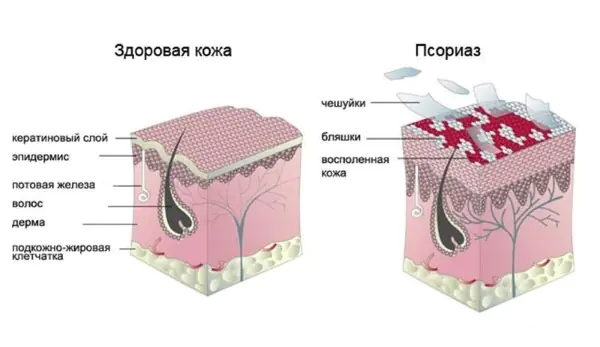
Failures in the blood supply lead to a lack of oxygen, nutrients, and fluid in the tissues. Without receiving these components in the required quantity, the skin dries out.
The reasons for this phenomenon may be related to a lack of vitamins. The main vitamins for combating dry skin are:
- retinol (vitamin A);
- tocopherol (vitamin E);
- B vitamins;
- ascorbic acid (vitamin C);
- biotin (vitamin H).
They moisturize the skin and form new cells. Age-related dry skin is associated with hormonal changes in the body. New cells form more slowly, and old ones do not have time to transform.
Dryness and flaking
The skin on the legs becomes dry and flaky for the following reasons:
- Allergy. An allergen can be a food product, clothing material, dust, or pet hair. If possible, avoid irritants and take antihistamines.
- Stress, overwork lead to the release of cortisol. It changes collagen molecules, which leads to dry and flaky skin.
- External aggressive environment (chlorine in the pool, ecology, ultraviolet radiation).
- Age-related, hormonal imbalances The body appears after 50 years of age, which causes dry skin. This happens due to changes in the structure of collagen fibers, which primarily form the epidermis. It is recommended to eat more foods containing collagen and drink clean water to support fat and lipid metabolism.
- fungal infections, which lead to skin irritation and changes in its structure.
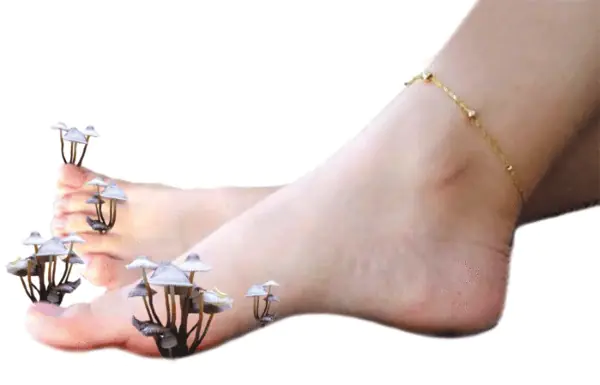
In older people, all causes become more acute.
Dry and itchy feet
Dry and itchy skin on the legs can occur due to a number of diseases: rubella, chicken pox, measles.
Causes of itching:
- Itchy feet can be caused by allergies, such as hives. Another cause of itchy skin on the legs is excess glucose levels in diabetes mellitus.
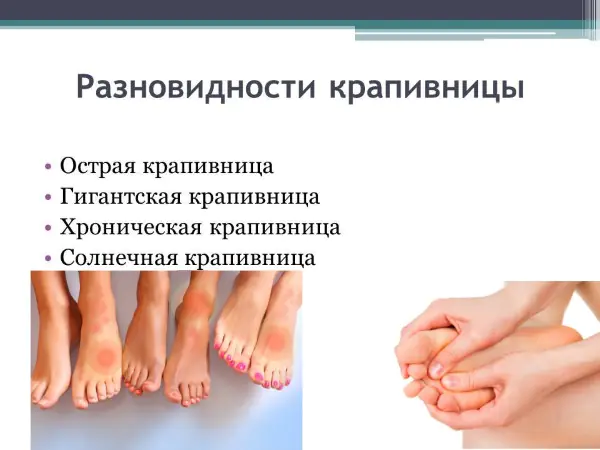
- With liver diseases, itching of the lower extremities appears. This occurs due to the release of bile into the blood, which affects the nerve endings.
- Impaired blood supply is the cause of itching, accompanied by swelling and heaviness. Acute itching that occurs on the foot and between the toes may be due to a fungal infection.
Dry skin of the lower leg
The lower leg is very sensitive to changes, since this area has 9 times fewer sebaceous glands than other parts of the skin. Dryness of the lower leg occurs for reasons such as dry air, synthetic clothing, temperature changes and poor-quality depilation of this area. Excessive use of solariums can also lead to dry skin.
Dry skin on feet
Dry skin on the feet is often caused by walking without shoes in the summer. This may be accompanied by the appearance of a fungal infection. One of the main reasons is uncomfortable shoes made from non-natural materials, so the skin does not breathe.
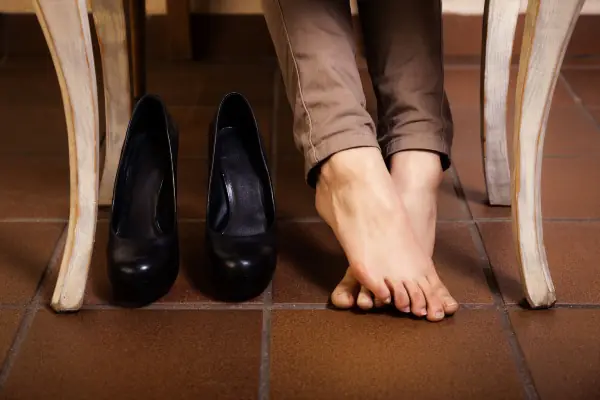
Dry skin on the legs. The reasons may be the appearance of a fungus. It occurs when wearing uncomfortable shoes that do not breathe. It is important to choose quality shoes
This is aggravated by the special skin of the sole, which is thicker than in other areas. Inflammation and cracks can result from insufficient care of the skin of the feet.
Dry skin on knees
The skin on your knees may dry out for these reasons:
- Lack of vitamins A and E.
- Kneeling poses.
- The influence of clothing.
- Hormonal problems.
- Lack of vegetable fats.
In addition, dry skin on the knees is a natural reaction of the body to the constant flexion and extension of this joint.
Causes of cracks
The appearance of cracks in the skin of the lower extremities is influenced by:
- Summer footwear. When wearing slates, the sole of the foot may receive impacts and microtraumas. Dry air and hot sand can also have a detrimental effect.
- Uncomfortable shoes and synthetic socks. When using them, the soles of the feet dry out and become cracked.
- Insufficient foot care. You should use baths and remove keratinized epidermis.
- Fungal infections. They are eliminated with antifungal drugs. Shoes should be disinfected.
- Kidney diseases and endocrine disorders.
- Disorders and diseases of the gastrointestinal tract.
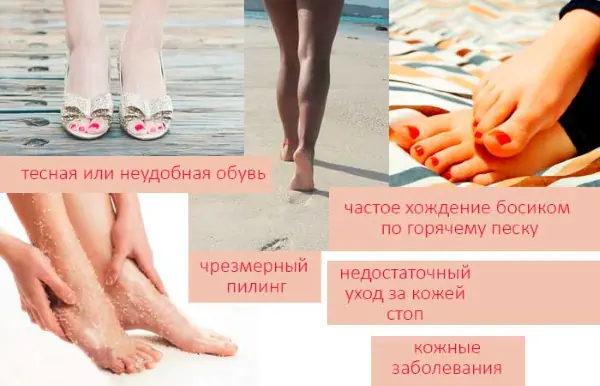
To completely cure cracks, it is necessary to find out the cause and take preventive measures.
Dry spots on the skin of the legs
Dry spots on the skin of the legs are formed due to a disruption in the functioning of the sebaceous and fatty glands.
This is influenced by factors:
- Allergies to food, medications and other substances (detergents and cosmetics).
- Diseases of the gastrointestinal tract.
- Fungus and similar diseases (various types of lichen).
- Skin disease such as eczema, psoriasis and others.
- Stressful state.
Dry spots also appear due to fluid deficiency and liver dysfunction.
Signs of the disease
Along with dry skin on your feet, other symptoms may appear:
- Separation of a layer of skin due to fungal infections.
- Dermis flows between the fingers.
- Bubbles appear, burst and dry out.
- Acute peeling.
- Psoriatic arthritis.
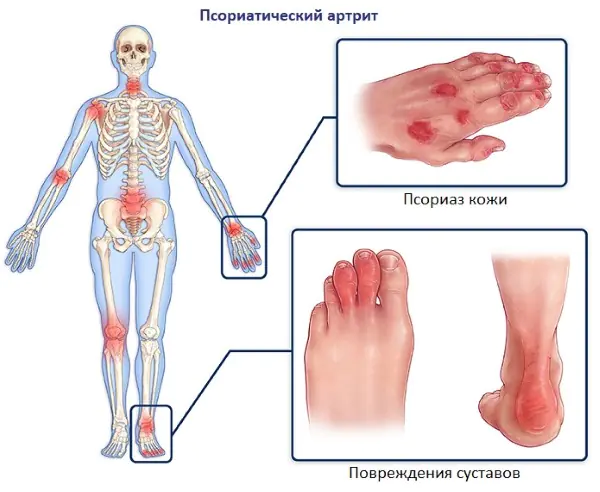
- A papular rash occurs between remissions.
- There is an irregular structure of the nails.
- Change in color of the dermis.
- Hard nodules form.
The listed symptoms relate to diseases: psoriasis, eczema, mycosis.
Cosmetics for the skin of the feet
Cream "Zorka"
It includes: chamomile extract; vitamins A, E; glycerol. The cream neutralizes inflammation, bacteria, moisturizes and nourishes the skin.
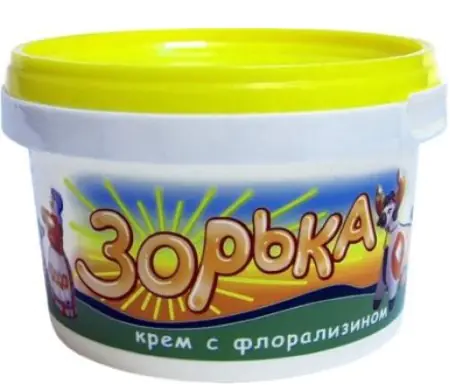
Apply at night on clean feet. It is advisable to wear cotton socks. Frequency of use: 1 time every 3 days.
Cream “Forest Power”
Compound: sorbic acid, flavorings, petroleum jelly, floralisin. The cream delivers oxygen to the cells of the dermis, nourishes it, and restores collagen tissue. The product is rubbed into the skin of the feet using massage movements. The procedure is repeated 2 times a day.
Cream “Lekar” with urea
Contains: urea, celandine extract, allantoin, oak bark extract, vitamin E, tea tree essential oil.
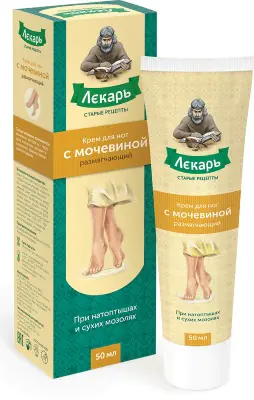
The drug softens the dermis of the heels and feet, and eliminates dried calluses. Rub onto clean, dry skin before bed once a day.
Cream "Sesderma"
Compound: oat extract, urea. It has a moisturizing, cleansing, soothing effect on the skin and eliminates itching. The cream should be rubbed in morning and evening, massaging problem areas until completely absorbed.
Therapeutic foot baths
Sea salt bath
Ingredients: warm water, one and a half tablespoons of salt. Dissolve the salt and place your feet in the water for 15 minutes. Then wash off the salt with water and moisturize the skin with cream. It is not recommended to continue the procedure longer, as salt corrodes the dermis.
Red wine bath
Ingredients: water (2 l), red wine (500 ml). After mixing, keep your feet there for 20 minutes. Wipe your feet and apply cream. The bath can be taken once a week.
Bath with medicinal herbs
Ingredients: wormwood, chamomile, mint, calendula, lemon balm. Pour hot water over the herbs and leave for 30 minutes. Keep your legs in the pelvis for no more than 20 minutes. After wiping them, moisten them with cream.
Baking soda and soap bath
Ingredients: baking soda (14 gr.), 15 gr. soap shavings. Stir in water at room temperature. The procedure lasts no more than 15 minutes.
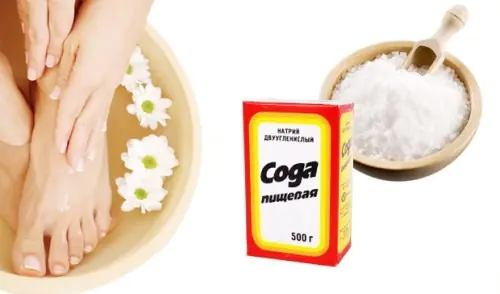
Upon completion, the feet are rinsed with clean water and moisturized with cream.
Streamlining your diet for healthy skin
To maintain healthy skin, the following foods should be present in your diet:
- Fruits and vegetables are orange in color. For example: persimmons, carrots, peaches, pumpkin, apricots. They contain vitamin A, which is necessary for skin cell renewal.
- Citrus fruits containing vitamin C. It promotes collagen formation for proper skin pigmentation and is a strong antioxidant.
- Lettuce and spinach. Vegetables are beneficial for the skin because they contain vitamins A, C, B, E.
- Nuts. They are rich in B vitamins and useful elements such as potassium, cobalt, iron, magnesium, phosphorus, manganese. Thanks to them, fats and proteins are more efficiently synthesized in cells, and new dermal tissues are formed.
- Cereals. They contain B vitamins, proteins, zinc, silicon, selenium, cobalt, copper, potassium. Dietary fiber improves the functioning of the digestive system and removes waste and toxins from the body. Silicon increases turgor and elasticity of the dermis.
- Dairy products enhance intestinal motility and normalize its microflora.
- Iron-rich foods. Apples, pomegranates, blueberries, white beans, liver, red meats, seafood. Iron increases hemoglobin, which supplies oxygen to tissues, preventing the effects of toxins and skin aging.
- Omega fatty acids found in fatty fish, vegetable oils, flax seeds, cod liver, and nuts. Restore the lipid layer that protects skin cells. Saturates the skin with moisture, making it elastic.
- Green tea, being a natural antioxidant, prevents skin aging.

Poor nutrition and fluid deficiency lead to depletion and dryness of the epidermis. Every adult needs to drink at least 2 liters. water per day.
Vitamin complexes
- "Perfectil". Ingredients: almost all vitamins, copper, biotin, selenium, zinc. The drug counteracts skin aging. Take 1 capsule after meals per day for a month. Between courses there are intervals of 1-2 months.
- "Vitrum Beauty". Ingredients: vitamins A, D, E, C, B, folic acid, nicotinamide, rutin. Microelements: iodine, iron, manganese, calcium, selenium, boron, zinc, magnesium. The drug restores and strengthens the structure of the dermis. The complex is taken 2 tablets per day after meals. It is possible to increase the dose to 3 tablets.
- "Supradin". Ingredients: vitamin A, D, E, PP, H, sodium bicarbonate, sucrose, sodium saccharin, mannitol, lemon flavor, tartaric acid. “Supradin” improves the efficiency of metabolic processes and promotes the synthesis of the collagen layer of the skin. The drug is taken 1 tablet with meals 1 time per day. The course lasts 30 days, after which there is a break for a period of 60 to 90 days.
Recipes for medicinal compositions for skin
Moisturizing peeling mask
You will need oatmeal (3-4 tablespoons), sugar, honey, 2 tablespoons of cosmetic oil. spoons. The flakes are ground in a coffee grinder. The remaining components are added and mixed to a dense mass.
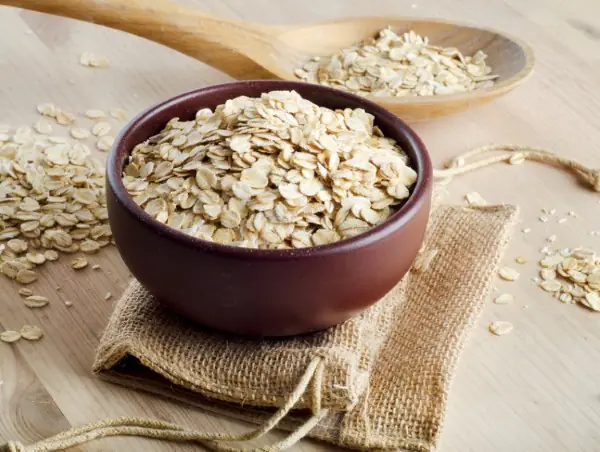
Rub the product onto pre-steamed feet using massaging movements and leave on for several minutes. Rinse the mixture with water and apply cream. You can make a mask every day.
Nourishing softening mask
Ingredients: honey, sour cream, full-fat cottage cheese. 2 tbsp. tablespoons of cottage cheese are mixed with sour cream and honey (1 tablespoon each). Rub the mixture into the skin of your feet and leave for 40 minutes. Rinse and moisturize the skin with cream. Repeat the procedure 2-3 times a week.
Mask for exfoliating old cells
Compound: oat flour, chopped nuts, sour cream. Flour (3 tablespoons) is thoroughly mixed with nuts (1 tablespoon), sour cream is added, everything is mixed until smooth. Apply to feet and leave for 20 minutes. After this, rinse your feet with clean water, rub your feet with a file and apply cream.
Nourishing oils and how to use them
- Shea butter (another name is “shi”) moisturizes the epithelium, softens and soothes the skin. Forms a protective layer of the dermis. Should be used before bed: rub in the oil and put on socks.
- Olive oil has a moisturizing effect due to the content of fatty acids. Oleic acid promotes hydration and restores the outer layer of the epidermis. The oil is rubbed into the skin and lasts for 1 hour. Be sure to rinse with warm water, as cold water increases dryness of the skin.
- Coconut oil contains such acids as lauric, hyaluronic, more than 7 types of fatty acids, and their triglycerides. They moisturize the epithelium, heal cracks, destroy bacteria, preventing fungal diseases. Before going to bed, the oil is rubbed into the skin, after which it is treated with pumice. It is advisable to wear socks.
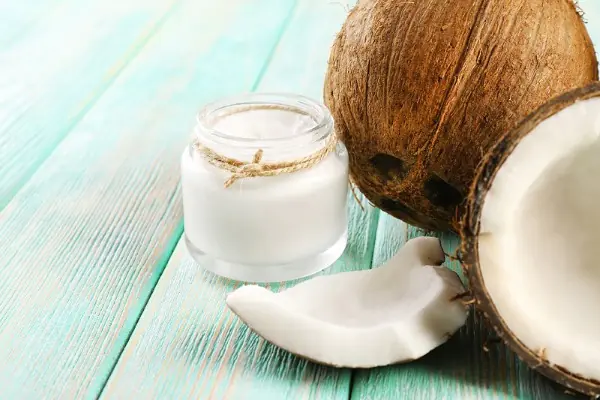
Dry skin on the legs, the causes of which are varied, can be eliminated on your own. Vitamin preparations, recipes for moisturizing and nourishing baths, and the use of oils will help with this. It is also important to remember that excessive dryness with other symptoms can be a sign of a developing disease.
Video about dry skin on feet
Causes of dry feet:
Traditional methods of treatment:
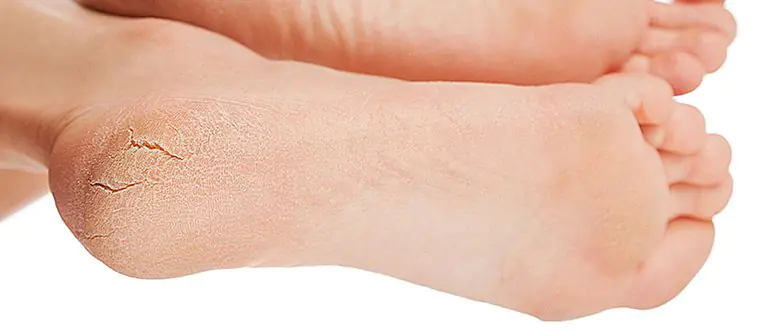
Cracks in the soles of the feet are one of the most common problems faced by women. Peeling and wounds spoil the beauty of our feet, causing many not only psychological self-doubt, but also pain when walking.
The formation of cracks begins with banal peeling and minor damage, many do not attach importance to this, but over time the situation worsens. The wounds become deeper and become infected, adding to the inflammatory process.
Causes of cracks in the skin of the foot
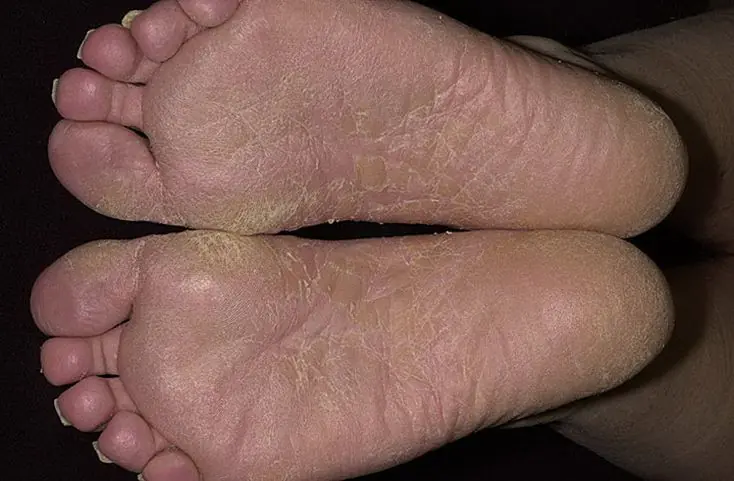
The following factors can cause cracks to appear:
- fungal infections, skin diseases;
- disruption of the endocrine system and metabolism;
- vitamin deficiency, lack of microelements and fats;
- allergic reactions;
- heart and vascular diseases;
- structural features of the skin (hyperkeratosis);
- taking medications.
Most fungal infections are characterized by severe itching and redness, which subsequently leads to cracking of the skin.
Endocrine diseases (diabetes mellitus) cause dehydration of the body, dryness of the entire skin is observed.
As a result of circulatory disorders of the lower extremities, cells do not receive proper nutrition, oxygen starvation occurs, and trophic disorders occur.
- lack of personal hygiene;
- uncomfortable shoes of the wrong size;
- pedicure done unprofessionally;
- frequent use of hard pumice stones and brushes;
- water with high chlorine content;
- arid and hot climate.
Small shoes constrict the foot; when walking, the load on the legs increases, disrupting the blood supply. The cells of the outer layer of the epidermis do not receive enough nutrients and begin to break down.
Wearing synthetic socks leads to an imbalance in the hydrolipidic state of the skin, its firmness and elasticity are lost, the surface becomes uneven, which leads to the formation of cracks on the soles of the feet.
Inadequate foot care promotes the proliferation of pathogenic flora, which causes the development of fungus.
Types of cracks on the feet
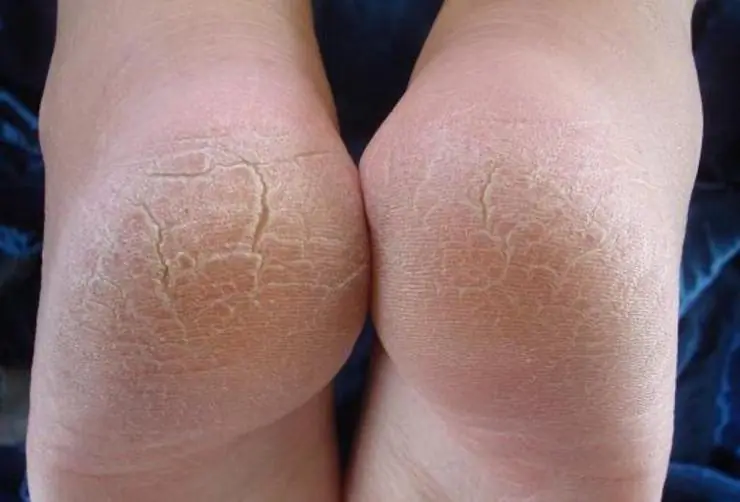
The classification takes into account the degree of tissue damage. There are:
- superficial (epidermal) ─ minor, painless cracks, capable of healing on their own, causing only an unaesthetic appearance;
- deep (epidermal-dermal) ─ deep cracks, possibly with bleeding, cause pain and discomfort while walking, after healing, scar tissue forms.
Depending on the nature of origin, there are:
- dry appearance ─ occurs with dry and sensitive skin;
- wet appearance ─ observed in people with excessive sweating.
Treatment
Not everyone knows how to treat cracks in the legs; first, you should find out the reasons that provoked the pathology.
Fungus ─ antifungal drugs with the active ingredient terbinafine are prescribed; daily baths in soda solution are also recommended, after which it is not recommended to wipe your feet dry.
Diabetes mellitus ─ treatment is aimed at reducing blood glucose; high glucose levels reduce the ability to heal wounds. You cannot steam your feet, only warm baths with the addition of non-irritating aseptic agents; plant-based creams are used to soften them.
Dry skin ─ Shallow cracks usually occur. It is not difficult to cure, just take a few soda baths, then apply a Vaseline-based ointment or a rich cream.
Soap and soda baths ─ add 1 tbsp to two liters of hot water. a spoonful of soda and half of 1 teaspoon of natural laundry soap. The legs are lowered for at least 10 minutes, and pumice is used to exfoliate rough particles. This method is not recommended for people suffering from arterial hypertension; it can cause an increase in blood pressure; use warm water!
Pharmacy ointments for cracked soles
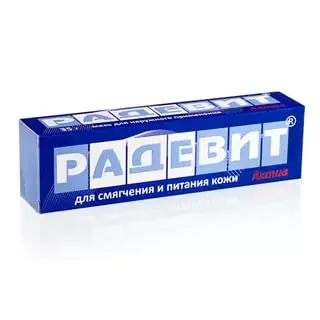
Treatment of cracks in the feet involves the use of medicinal ointments with anti-inflammatory action.
List of effective drugs prescribed by the doctor:
- Radevit ─ based on emulsion wax, with vitamins A, E, B2 and glycerin, relieves inflammation and has a disinfecting effect, promotes recovery. Prescribe no more than 2 times a day; before application, treat the foot with an antiseptic.
- Zazhivin ─ plant-based gel, consists of milk thistle oils, tea tree, sage extract with vitamin F. The product has a bactericidal and regenerating effect, used at night.
- BioAstin is a cream with extracts of medicinal herbs, tea tree and clove essential oils, flax oil and urea, which has not only an antimicrobial but also a moisturizing effect. Multiple uses per day are allowed.
- Lamisil is a broad-spectrum antifungal drug that destroys pathogens and fungi, applied exclusively to the affected areas once a day.
- Hydrobalance ─ contains glycerin and urea, replenishes the lack of fats and moisture, relieves irritation.
- SixtuMed is a special product developed to help diabetics, available in the form of oil and balm. Includes herbal ingredients that nourish and heal wounds, reduce itching and irritation.
Folk recipes
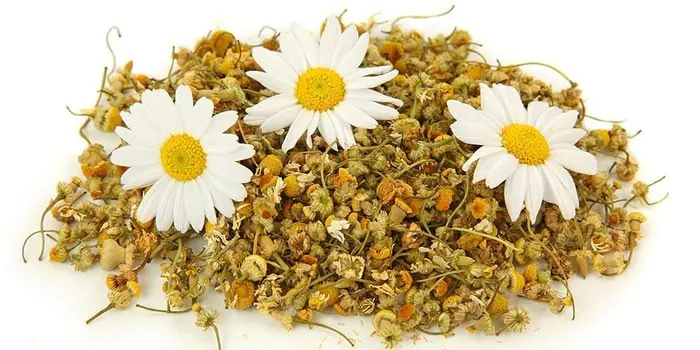
Before treating cracked heels and toes at home, it is necessary to objectively assess the situation. Advanced cases require medical supervision, and self-medication will only cause complications. If there are no contraindications, then the following traditional medicine recipes are allowed:
- Beeswax and paraffin are dissolved in a water bath, salicylic acid is added, everything is done in a 1:1:1 ratio, one layer of the resulting mass is applied to the area of damaged skin and left to dry. Then three more balls are applied and secured with a bandage for a day. After the procedure, it is recommended to take a soap and soda bath.
- The cabbage leaves are beaten until the juice appears, then they are fixed on the leg, woolen socks are put on and left for 12 hours.
- Raw potatoes with skins are grated, you can add linseed oil. The resulting slurry is applied to the cracks and wrapped for 3 hours. Afterwards, the dead areas are removed and the skin is lubricated with olive oil.
- Honey has medicinal properties and is used as a compress. Honey is applied to the damaged skin and covered with a cotton cloth, left overnight, washed off in the morning and baby cream applied, and the crack is sealed with a regular band-aid to retain moisture.
- Take a juicy apple and onion, grind it into a pulp and fix the resulting mass for 12 hours, then lubricate it with a moisturizer.
- It is useful to rub warm olive oil daily after a bath: it softens and heals wounds.
- Decoctions of medicinal herbs such as yellow sweet clover, chamomile, string, calendula can be used in the form of compresses and baths.
After the procedures, instead of expensive moisturizing creams, you can use medical Vaseline. For deep cracks, it is not recommended to use products that include vinegar and alcohol - they can cause irritation.
Some folk recipes are prepared with the addition of 70% vinegar essence; they should be done with extreme caution, as you can get severe burns.
Preventive measures
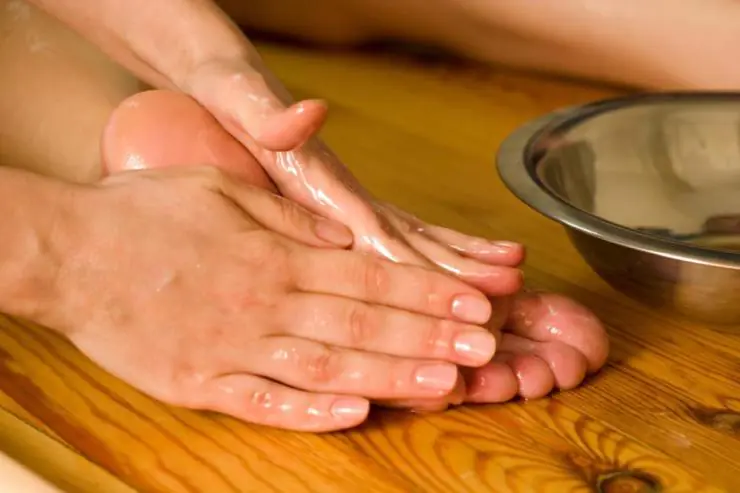
You can prevent the formation of cracks by observing the following conditions:
- Dry skin type requires special care and cosmetics, especially in the summer. If the first symptoms appear, you need to take action immediately;
- a good method is daily foot massage with oils: acting on reflex points, it has a positive effect on the whole body;
- balance your diet: consume more foods containing vitamins A and E, give preference to fruits and vegetables;
- pay attention to shoes: if they are made of artificial material and cause discomfort, discard them.



